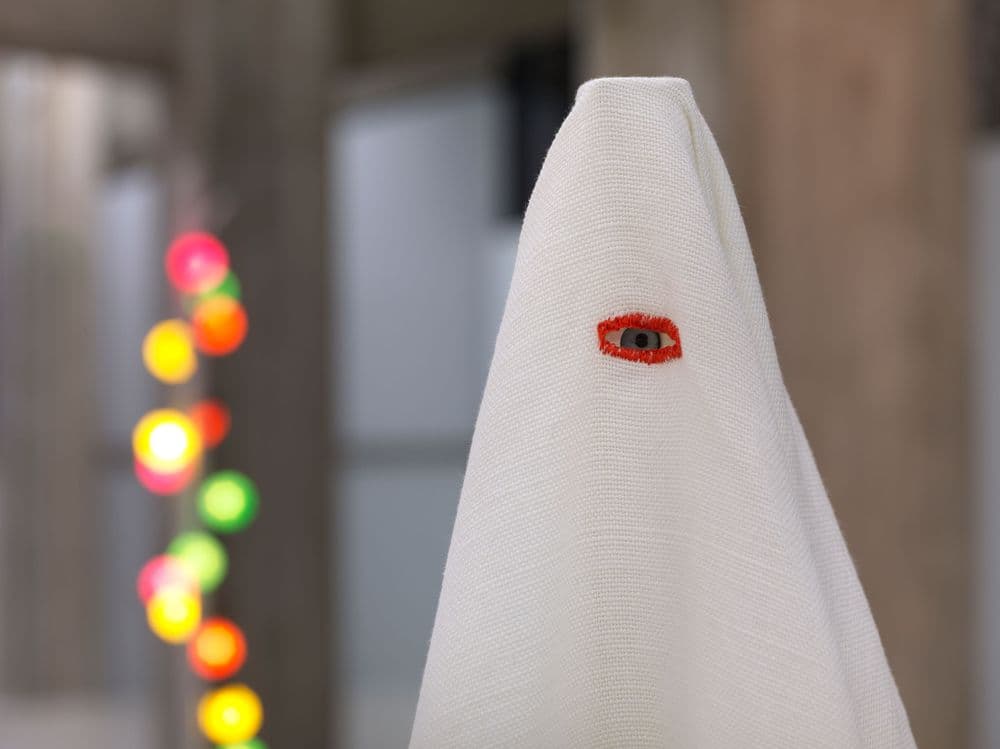5th edition, 2013–2015, Corin Sworn

What truths and freedoms are revealed by disguise?
Corin Sworn
For the fifth edition of the Max Mara Art Prize for Women, winning artist Corin Sworn (b. 1976) created a piece inspired by Commedia dell’Arte, an improvisation-based form of theatre that developed in sixteenth-century Italy. The project is reflective of an ongoing artistic investigation that interweaves history, memory, and fragments of true or imagined stories.
Finalists and jury
Finalists: Beatrice Gibson, Melanie Gilligan, Judith Goddard, Philomene Pirecki, Corin Sworn
Jury: Iwona Blazwick OBE, Director of Whitechapel Gallery (chair); Lisa Le Feuvre, writer and curator; Pilar Corrias, gallerist; Runa Islam, artist; Candida Gertler, collector


The winning project
Silent Sticks, Sworn’s winning project for the Max Mara Art Prize for Women, draws inspiration from the stories and stock characters of Commedia dell’Arte, a form of improvised theatre that developed in sixteenth-century Italy. Its archetypes have inspired artists and writers for hundreds of years, from Shakespeare and Marlowe to Goya and Picasso, and still have a profound cultural influence.
Residency
During the Italian residency that Collezione Maramotti organized for Sworn, she carried out in-depth research in the libraries, archives and galleries of major Italian cities. Accompanied by her family, the artist moved between Rome, Naples and Venice. During the first stage of her residency, she was aided in her research by Roman curator Pier Paolo Pancotto and then by Neapolitan critic and curator Eugenio Viola. In the final stage, the artist spent a period of time at Fondazione Bevilacqua La Masa in Venice.
Silent Sticks
Whitechapel Gallery (20 March–19 July 2015)
Collezione Maramotti (4 October 2015–28 February 2016)
The Italian residency that Collezione Maramotti organized for Sworn yielded Silent Sticks, an installation with filmed elements that retell an infamous sixteenth-century case of imposture involving assumed identities, trickery and deceit.
Like a scene from a play, Sworn’s staging is made up of many different elements. Props, sound, videos and costumes made by hand with the stylists and artisans of the Max Mara Fashion Group; they were inspired by the text Il teatro delle favole rappresentative by Flaminio Scala, an actor and impresario for one of the leading theatrical troupes of the Renaissance.
Sworn’s work poses a range of questions: how can an aesthetic tradition of the past nourish contemporary culture? Does costume communicate identity? What is the relationship between gesture and language? Can a garment be a work of art? What is the relationship between theatre and film, and between set and sculpture? What truths and freedoms are revealed by disguise?
Sworn is interested in switched identities and the frequent use of this literary device in Commedia dell’Arte productions. Early actors, like the characters they portrayed, played with perceptions linked to rank and social status – a woman dressed as a man, a master dressed as a servant, or a nobleman who looked like a beggar – and thus also acted out anxieties surrounding the social instability of the time. After the initial stage of the exhibition at the Whitechapel Gallery in London, Sworn reconceived and adapted it for the spaces of Collezione Maramotti.




Later awards and recognition
In 2015, Sworn received the Leverhulme Prize, which recognizes extraordinary research by artists whose work has had an international impact and whose future career is extremely promising.

Title: Corin Sworn. Silent Sticks
Texts by: Daniel F. Herrmann, Bina von Stauffenberg, Corin Sworn
Publisher: Whitechapel Gallery, Londra, in collaboration with Max Mara and Collezione Maramotti, Reggio Emilia
Year: 2015
Number of pages: 128
Dimension: 17 x 24 cm Language: English / Italian